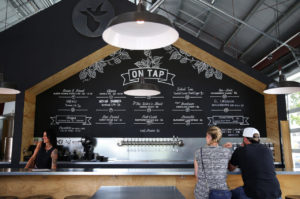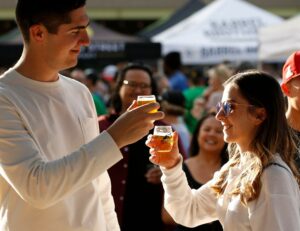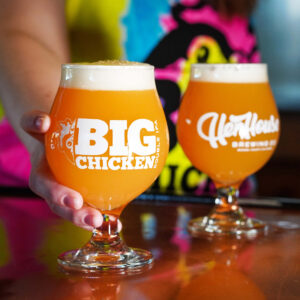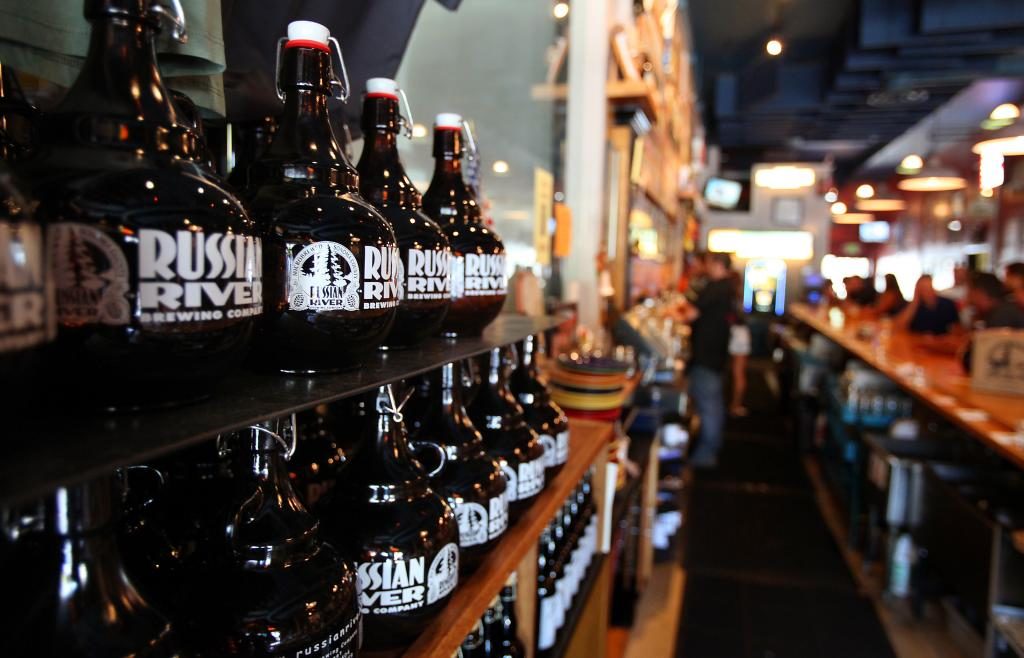In the 1800s, when a man wanted to enjoy a few beers outside his local tavern, he didn’t stock his cellar with bottled beer. Instead, he asked the barkeep to fill a growler with fresh draft beer to go. Growlers usually took the form of half-gallon galvanized buckets, delivered to patrons by “bucket boys” who carried the pails through the streets on notched poles. this custom was called “rushing the growler.”
No one knows for sure the origination of the term “growler,” but one popular theory is that the vessels were named for the sloshing sound the beer made inside the buckets during transport.
Whatever the reason behind the name, growlers are experiencing a revival in taprooms all over Sonoma. Not only do they allow beer lovers to bring home unbottled, limited-volume brews for drinking at home, the reusable glass jugs are eco-friendly, too.
Patrons pay a small fee for an empty growler — usually $6 to $8 — which they can bring back to the brewery for discounted refills. (Once emptied, a growler should be rinsed immediately with warm water. If it’s been left to sit for a couple days, warm water with just a touch of dish soap will do the trick.)
If a growler’s seal — typically a flip-top lid — is left intact, the beer will stay fresh in the refrigerator for a week or so. Once a growler has been opened, it’s best to finish off the beer in a day or two.
Nearly all Sonoma brewers offer growlers in their taprooms, including Dempsey’s Restaurant & Brewery, Lagunitas Brewing Co. and Petaluma Hills Brewing Co. in Petaluma; Fogbelt Brewing Co., Russian River Brewing Co. and Third Street Aleworks in Santa Rosa; Carneros Brewing Co. in Sonoma; Woodfour Brewing in Sebastopol; Bear Republic Brewing Co. in Healdsburg; and St. Florian’s Brewery in Windsor.
So why not grab a growler?









